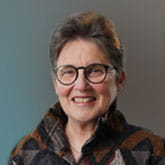The mammoth task of vaccinating the majority of the human population of the world against COVID-19 is before us. Several viable highly effective vaccines have been developed at record speed and the pharmaceutical industry will now be called upon to meet the next challenge of producing the vaccine at scale by manufacturing billions of required doses. A distribution and logistics challenge follows: how to equitably coordinate and execute the widespread distribution and administration of these vaccines, some of which require extremely cold temperatures to maintain viability. Scientists, logistics experts, ethicists, clinicians, epidemiologists, government agencies, private sector and the public will need to collaborate in order for this vaccination effort to be successful.
Many new technologies, and new modalities have already been invented in the process of solving this urgent need and many more innovations will be coming in the months ahead as this colossal project is undertaken. Health information technology (HIT) has a role to play in the success of this endeavor. There are multiple vaccine-related tasks that will be facilitated with the assistance of evolved HIT systems.
Infographic: HIT for Covid-19 Vaccine Administration
Identifying who needs to be vaccinated, and with what priority
Mature population health platforms are designed first and foremost to create and manage cohorts of patients who share clinical or demographic common denominators. In this regard, they are extremely well-suited to identify patients at high risk for COVID-19 complications based on clinical or comorbidity characteristics. Patients who decline vaccination can be excluded and flagged, as can patients who already tested positive for COVID-19 in recent months, or those already vaccinated. This process is highly dynamic and will require practices to manage shifting, ever-changing populations efficiently and accurately.
Patient outreach and communication
Automated outreach to patients identified as high risk and requiring early vaccination can be facilitated by EHR and population health outreach programs utilizing multiple communication modalities based on the patient’s communication and language preferences. These systems also meticulously log and document outreach messages. It will be essential for practices to engage their patients early to increase awareness and acceptance of this new vaccine.
Documentation and tracking of immunization status
EHRs and population health tools have the toolset to allow documentation of the particular vaccine provided to each individual patient. Once the reporting requirements at the state and federal level become available, the mode of transfer of this data and the specific data elements can be determined. It is encouraging that at this time there are multiple state vaccination registries for routine non-COVID-19 vaccinations already receiving interfaced data from EHR systems across the country.
Identification of gaps in care for COVID-19 vaccinated patients
Many patients deferred routine preventive care during the pandemic. As patients become vaccinated and therefore at lower risk for contracting COVID-19, it will be important for population health systems to actively identify gaps in care among patients who have been vaccinated and actively outreach to these patients to complete the required and recommended preventive services. Similarly, reaching out to already vaccinated patients to attend to ongoing care for chronic conditions is going to be important in order to return patient confidence and engagement to pre-pandemic levels.It is reassuring to know that once the details of the process by which the American public is going to be vaccinated is known, HIT platforms are ready to facilitate the required tasks. Clearly, some adaptation to the specific requirements that the COVID-19 vaccination project will impose will be necessary, but the required tasks are ones that these systems were built to address and have been utilized and honed with other vaccines and will thus serve this critically important mission well.
Subscribe to the NextGen Advisor blog to stay updated on COVID-19 and how health IT will play a critical role in the vaccine management and distribution.
For information about NextGen Healthcare’s Population Health solution, please click here.
Meet NextGen Ambient Assist, your new AI ally that generates a structured SOAP note in seconds from listening to the natural patient/provider conversation.
Read Now